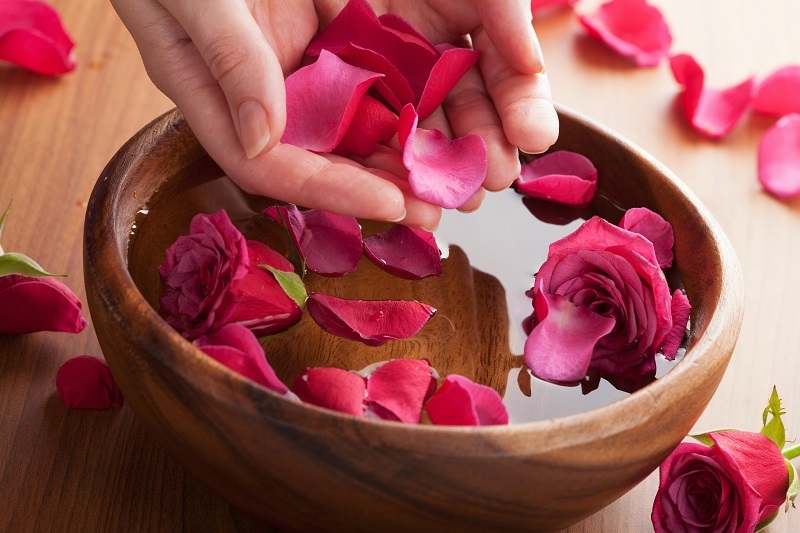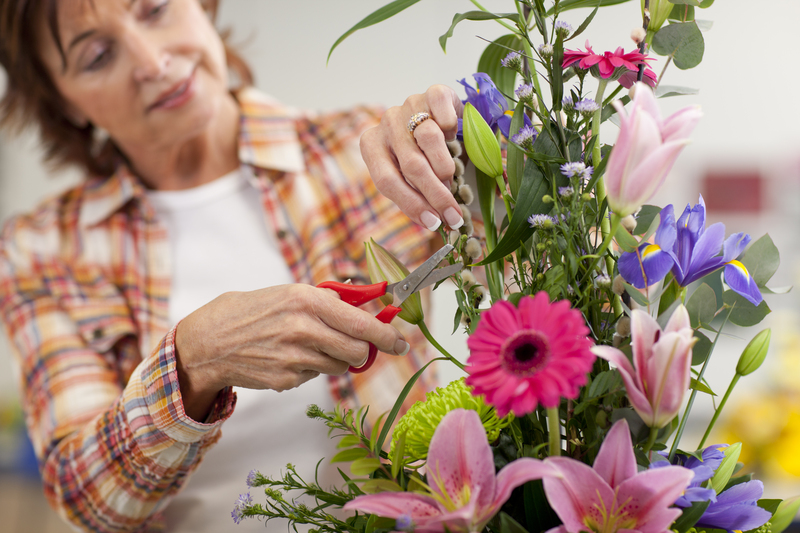Ensuring Long-lasting Orchid Blooms
Posted on 20/08/2025
Ensuring Long-Lasting Orchid Blooms: The Complete Guide
Orchids are widely celebrated for their unique beauty, exotic appeal, and the ability to bring a touch of elegance to any home. However, maintaining long-lasting orchid blooms often poses a challenge for both novice and experienced growers. This comprehensive guide unpacks the secrets to maximizing your orchid's blooming period, featuring expert tips, best practices, and troubleshooting advice to guarantee flourishing flowers season after season.

Why Do Orchids Drop Their Blooms?
The first step in ensuring prolonged orchid blooms is understanding what causes flowers to wilt or drop prematurely. While some bloom loss is part of the natural cycle, premature loss can be caused by:
- Incorrect watering routines
- Insufficient or excessive lighting
- Inadequate humidity levels
- Sudden temperature changes
- Pest infestations or disease
- Improper feeding practices
Pinpointing and addressing these factors are critical for encouraging orchids to bloom longer.
Choosing the Right Orchid Species
With over 25,000 species and more than 100,000 hybrids, not all orchids are created equal. Some varieties naturally have a longer blooming period than others. Here are top choices for persistent blooms:
- Phalaenopsis (Moth Orchid): Known for their resilience and flower displays lasting two to six months.
- Dendrobium: Some species bloom for weeks, while others can delight you for months.
- Cattleya: While the blooms are shorter-lived, sequential blossoming extends the color display.
- Oncidium: These orchids can produce sprays of flowers lasting up to two months with proper care.
Choose the right species based on your environment and care capabilities for optimal flowering results.
Evaluating Your Orchid's Health
Healthy orchids produce longer-lasting blooms. Inspect leaves for firmness and color, avoid signs of disease like spots or mildew, and make sure roots are plump and white to green. Boosting plant health is the foundation for extending flower life.
Optimal Watering Practices for Extended Orchid Blooms
Proper watering is perhaps the most crucial element in ensuring the longevity of orchid blooms. Orchids are susceptible to both drought and overwatering, each leading to bud drop or shortened bloom times.
Watering Tips
- Avoid overwatering: Most orchids thrive when their roots dry slightly between watering sessions.
- Use room-temperature water: Sudden chills or hot water may shock roots.
- Water in the mornings: This allows excess moisture to evaporate, reducing the risk of disease.
- Check the potting mix: If it's damp, hold off on watering for another day or two.
Consistent hydration, not wet feet, is key to prolonging blooming.
Perfect Light Conditions for Blooming Orchids
Light is a primary driver of orchid health and prolonged blooms. Both insufficient and excessive light can reduce bloom times significantly.
How to Provide Ideal Light
- Bright, indirect sunlight is best for most orchid species.
- Avoid direct midday sun: This can scorch leaves and desiccate blooms prematurely.
- Supplement with grow lights in dimly lit rooms, especially during winter months.
- Monitor the color of the leaves: medium green typically indicates healthy light levels.
Position your orchids by an east- or west-facing window for the best balance of light and warmth, helping assure long-lasting orchid blooms all year round.
Temperature and Humidity: Key Factors for Sustained Blooms
Orchids are sensitive to temperature fluctuations and humidity, both of which can impact flower longevity.
Managing Temperature
- Keep daytime temperatures between 65-75?F (18-24?C) and nighttime temperatures around 10?F lower for most orchids.
- Avoid placing orchids near heat vents, air conditioners, or drafty windows to prevent stress that can shorten bloom time.
Maintaining Humidity
- Ideal humidity is around 40-60%. Use a pebble tray or humidifier in especially dry environments.
- Mist orchid leaves (not the flowers) occasionally to maintain microclimate, but ensure good air circulation to prevent mold.
Balanced temperature and humidity go a long way in keeping orchid flowers fresh and vibrant for weeks or even months.
Nutritional Needs: Feeding for More Enduring Blooms
Proper fertilizer use is a game-changer for extending the blooming cycle of orchids.
Feeding Guidelines
- Use a balanced orchid fertilizer every 2-4 weeks during the growing season (spring and summer).
- Switch to a bloom-booster formula (higher in phosphorus) when flower spikes emerge.
- Flush pots with plain water monthly to avoid salt build-up, which can damage delicate roots.
Careful, routine feeding equips orchids with the nutrients required for robust, lasting blooms.
Repotting: Refreshing Orchids for Extended Blooms
Old, compacted potting media can retain excess moisture and foster root diseases, both hazardous to bloom longevity.
When and How to Repot
- Repot every 1-2 years, or when the potting mix breaks down or roots overtake the pot.
- Use fresh, well-draining orchid bark or sphagnum moss mix.
- Trim away dead or rotten roots and choose a slightly larger pot only if necessary.
Repotting revitalizes orchids, enhancing nutrient uptake and supporting longer, healthier flowers.
Pest and Disease Management for Bloom Longevity
Pests and diseases can quickly abbreviate the lifespan of orchid flowers. Early detection and intervention are crucial.
Common Orchid Pests
- Mealybugs: Appear as cottony blobs on leaves and stems.
- Aphids: Tiny, often green insects feeding on sap.
- Spider mites: Create fine webs, especially during low humidity.
Disease Prevention
- Practice good sanitation: Sterilize tools and containers regularly.
- Remove infected leaves or flowers immediately to prevent spread.
- Ensure adequate air circulation to reduce fungal growth.
Monitor your plants weekly and act promptly at any sign of trouble to ensure your orchids enjoy maximum blooming time.
Practical Orchid Care Tips to Prolong Blossom Life
- Never touch the blooms: Oils and dirt from fingers can hasten wilting.
- Keep away from ripening fruit: Ethylene gas emitted causes early flower drop.
- Stabilize the environment: Minimize moving orchids once buds have set.
- Remove faded flowers: This prevents rot and helps the plant focus energy on remaining blooms.
Incorporate these proven techniques into your regular orchid care and you'll witness noticeably longer-lasting orchid flowers.
Understanding the Orchid Bloom Cycle
Orchids, like all flowering plants, follow a predictable cycle: growth, spiking, blooming, and resting. To encourage repeat or prolonged blooming:
- Allow a rest period after flowering before increasing feeding or repotting.
- Don't cut healthy spikes on certain varieties (like Phalaenopsis), as they may re-bloom from old nodes.
Respecting the plant's natural rhythm promotes ongoing health and extended flowering in subsequent cycles.

Frequently Asked Questions on Ensuring Long-Lasting Orchid Blooms
How long do orchid blooms typically last?
This depends on the orchid species and growing conditions. Phalaenopsis can bloom for up to six months; others, such as Cattleya, may bloom for a few weeks. Excellent care can optimize these timelines.
Can I force my orchid to re-bloom quickly?
While you can provide optimal conditions, forcing orchids to re-bloom out of season stresses the plant. Respect natural cycles and nurture with patience for more prolific, healthy blooms in the long run.
Is trimming flower spikes beneficial?
For most Phalaenopsis, trimming just above a visible node after flowers fade can stimulate a new branch and more blooms. For other orchids, it's best to remove flower spikes once completely brown and dry.
Should I mist orchid blooms to keep them fresh?
No. Always avoid misting blooms; mist only the foliage. Wet petals are prone to spotting and rot, resulting in shortened display life.
Summary: Achieving Prolonged Orchid Flower Displays
Ensuring long-lasting orchid blooms is a rewarding pursuit combining knowledge, observation, and dedication. Here's a brief recap for success with enduring orchid flowers:
- Choose easy-care, long-blooming orchid varieties for your environment.
- Master proper watering and feeding routines to prevent stress and bud drop.
- Provide correct lighting, temperature, and humidity for peak performance.
- Maintain cleanliness, inspect for pests, repot as needed, and respect natural growth cycles.
With informed, consistent care, your orchids will not only produce breathtaking blooms but also hold onto their flowers for weeks or even months--turning your home into an oasis of lasting beauty.
Further Resources for Orchid Enthusiasts
By following the guidance in this article, even beginners can master the art of ensuring long-lasting orchid blooms, transforming any space with vibrant, healthy, and stunning orchid flowers.







